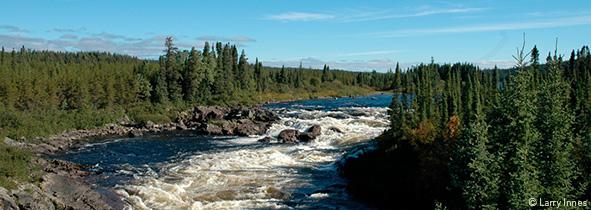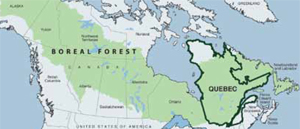Provincial and Territorial Forest Facts
Explore Canada's Boreal Forest by Province and Territory to see what makes each part of the boreal forest special.
Choose a province or territory:
Quebec


Quebec's Boreal Forest:
- is 1.2 million km2 (297 million acres) in size – twice the size of France.1
- comprises 21% of Canada's Boreal Forest.
- is home to more than 30 aboriginal communities representing 9 aboriginal cultures.2
- is home to the Snowy Owl, Quebec's official bird, and the Yellow Birch, the official tree.
- stores 31 billion tonnes of carbon in its soils, peat and forests – equivalent to around 155 years' worth of Canada’s GHG emissions in CO2 equivalent at 2014 levels.3
- is the breeding ground for 300 to 500 million birds of 180 species, including threatened species like Harlequin Duck, Barrow's Goldeneye, Canada Warbler and Olive-sided Flycatcher.
- supports more than 25% of Canada's Woodland caribou and substantial herds of Barren ground caribou.4
- features 900,000 km2 of intact forest, peatland, and wetland habitat free from industrial development, making up 75% of the province's boreal region.5
- holds 9 of 35 (25%) of North America's most unfragmented and pristine river systems and most of North America's healthiest Atlantic salmon runs.6
1 Canadian Boreal Initiative. 2003. Canada's Boreal Region.
2 Aboriginal Canada Portal (www.aboriginalcanada.gc.ca), and Global Forest Watch.
3 Tarnocai, C. and Lacelle, B. 1996. Soil Organic Carbon Digital Database of Canada. Eastern Cereal and Oilseed Research Center, Research Branch, Agriculture and Agri-Food Canada, Ottawa, Canada.
4 The CircumArtic Rangifer Monitoring & Assessment Network. Accessed August, 2009. www.carmanetwork.com
5 Global Forest Watch Canada. 2009. Canada's Forest Landscape Fragments: A Second Approximation.
6 Benke, A., and Cushing, C. Rivers of North America. 2005.

